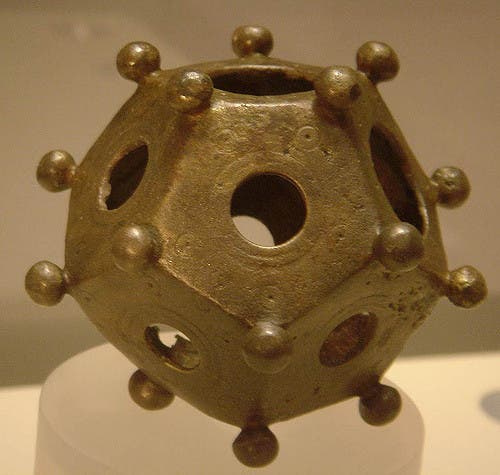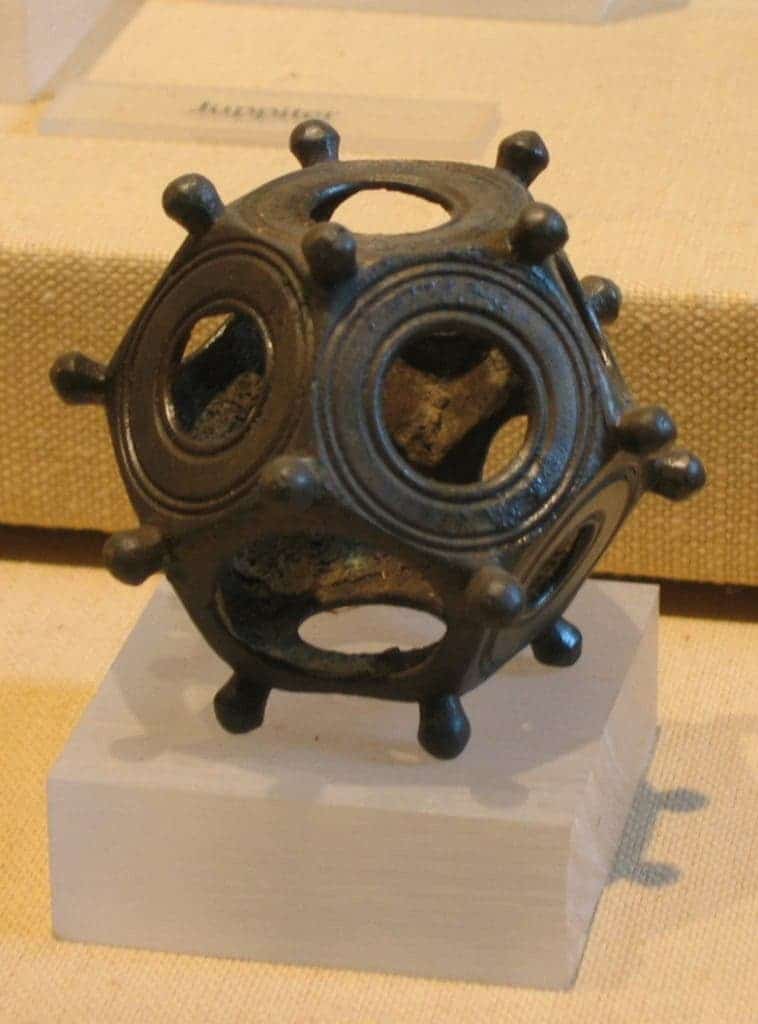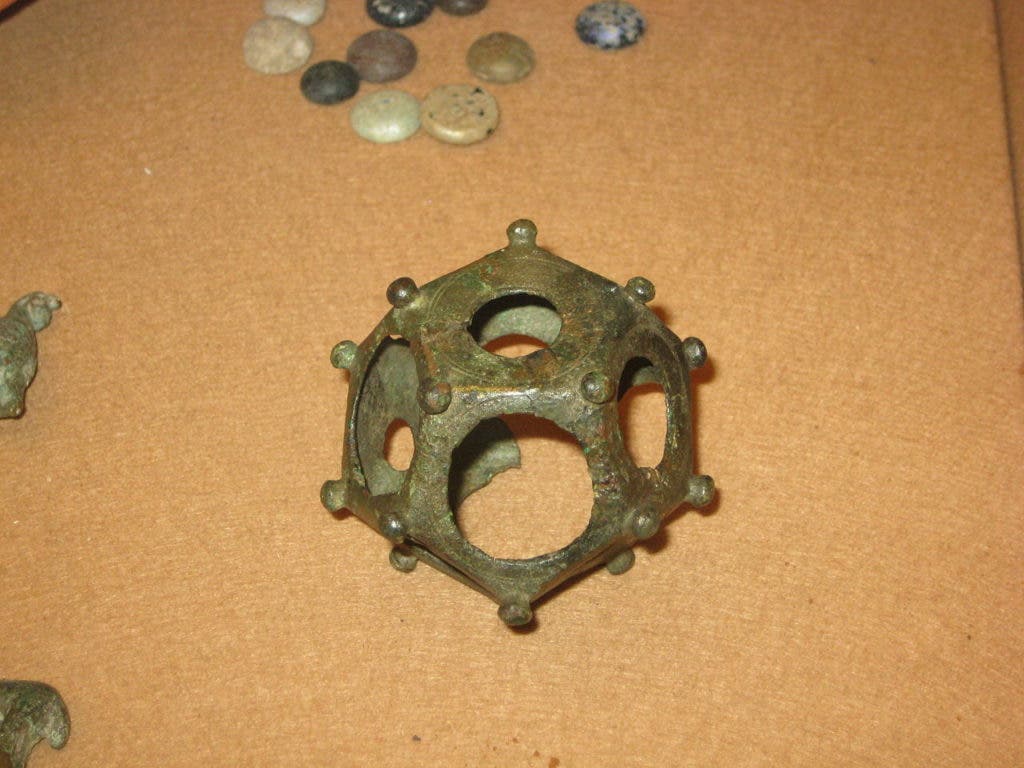In 1739. archaeologists found a most curious thing: a bronze dodecahedron, empty on the inside, and quite intricate in design. It has since been dated to the 2nd and 3rd century, to Roman times (and was likely created by the Romans). Why? We don’t really know.

The objects range from 4 to 11 cm, so they’re quite small (1.5 to 4.3 inch) and they were found in several places across the Roman Empire, like Great Britain, Netherlands, Germany, Luxembourg, Austria, Switzerland, France, Belgium, and Hungary – mostly in central and Western Europe. No historical or literary mention of these objects was recorded, so when the first ones were discovered they were quite puzzling.
A dodecahedron had wax on the inside, so some proposed they were candle holders. Other hypotheses include flower stands, staff or scepter decorations, a fortune telling devices, a bludgeon, a children’s toy, dice, or a measuring device (more precisely as a range measuring object on the battlefields).
However, none of these actually has solid evidence backing them up, so anthropologists have come up with a different idea: they were religious artifacts, as most of them have been found at Gallo-Roman sites.

There’s a joke in the science world saying that if an anthropologist doesn’t know what something is for, it’s for religious purposes – and if a biologist doesn’t know what something is for, it’s for sexual display. This may very well be the case here as there isn’t any strong evidence to support religious purposes either.
So the objects, all of which feature twelve flat pentagonal faces, a circular hole in the middle, and a number of knobs at each corner point, are still a mystery. It’s not likely that they served as a measuring instrument of any kind because they were not standardized – they came in many different sizes and even their openings arrangement and size vary. To make things even stranger, the ones in Europe were made of stone or bronze, but smaller dodecahedra with the same features (holes and knobs) made of gold have been found in South-East Asia – so the material was not a big concern.

So they could have been strictly decorative or they could have played a religious role – or why not, maybe a different purpose we’re completely missing. Either way, the Roman Dodecahedra remain a big archaeological mystery, one for which there will likely never be a certain answer.






